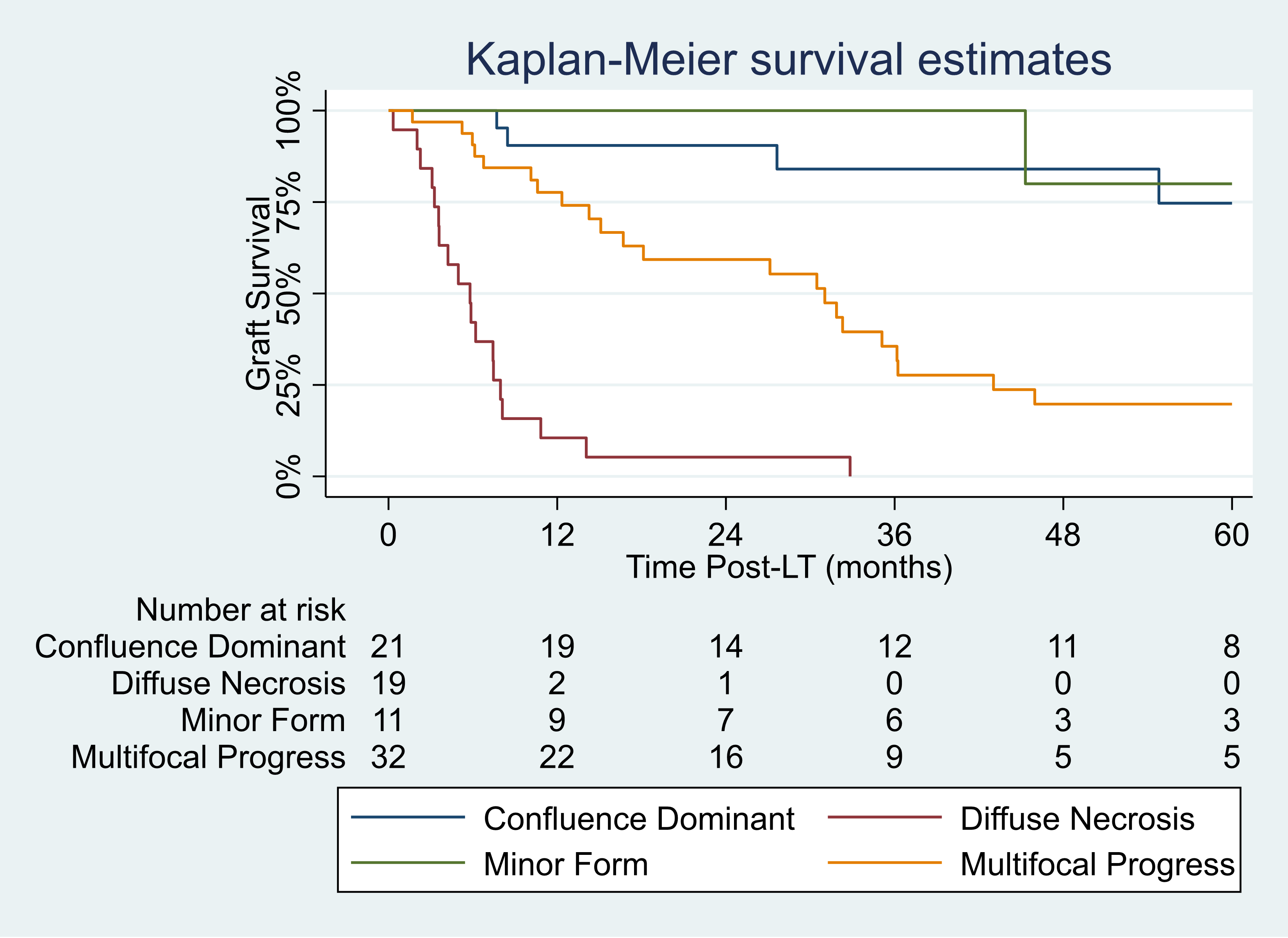Classification of Distinct Patterns of Ischemic Cholangiopathy Following DCD Liver Transplantation: Distinct Clinical Courses and Long-Term Outcomes from a Multicenter Cohort
1Mayo Clinic Jacksonville, Jacksonville, FL, 2Mayo Clinic Arizona, Scottsdale, AZ, 3Mayo Clinic Rochester, Rochester, MN
Meeting: 2021 American Transplant Congress
Abstract number: 187
Keywords: Bile duct, Donors, non-heart-beating, Ischemia, Outcome
Topic: Clinical Science » Liver » Liver: MELD, Allocation and Donor Issues (DCD/ECD)
Session Information
Session Name: MELD, Allocation and Donor Issues
Session Type: Rapid Fire Oral Abstract
Date: Sunday, June 6, 2021
Session Time: 6:00pm-7:00pm
 Presentation Time: 6:30pm-6:35pm
Presentation Time: 6:30pm-6:35pm
Location: Virtual
*Purpose: As the number of donation after circulatory death (DCD) liver transplants (LTs) performed in the United States continues to increase annually, there has been interest to develop a more robust exception point safety net for patients who develop ischemic cholangiopathy(IC) following DCD LT. As such, there is a need for better understanding of the clinical course and long-term outcomes in patients who develop IC, as well as determining if IC can be classified into distinct categories with distinctly different clinical outcomes.
*Methods: All DCD LT (N=770) performed at Mayo Clinic-Florida, Mayo Clinic-Arizona and Mayo Clinic-Rochester from 1/1/1999-3/30/2020 were included. Clinical course and outcomes were investigated for the overall cohort of patients developing IC, as well as compared between four distinct radiologic patterns of IC: Diffuse Necrosis (DN), Multifocal Progressive (MP), Confluence Dominant (CD) and Minor Form(MF).
*Results: A total of N=83 (10.8%) patients developed IC, of which N=41 (5.5%) were ultimately listed for retransplantation (ReLT). Patient survival following ReLT for IC was 88.4%, 79.0% and 72.4% at 1-, 3- and 5-years, respectively. Patients with DN and MP patterns suffered from frequent hospital admissions for cholangitis in the first year following DCD LT (median 3 and 2), were largely stent dependent (100% and 85.7%) and almost universally required ReLT. Patients with CD disease were managed with multiple stents and frequently recovered, ultimately becoming stent free without need for ReLT. Patients with the MF of IC did well with limited need for stent placement or repeat procedures and did not require ReLT. Graft survival was significantly different between the 4 distinct IC patterns (p<0.001).
*Conclusions: The present analysis provides the largest and most detailed analysis to date on the natural history and clinical course of IC. IC development appears as a spectrum of damage in the bile ducts rather than an all or none phenomenon. Patients developing IC can be classified into 4 distinct patterns with distinct clinical courses.
To cite this abstract in AMA style:
Croome KP, Mathur AK, Aqel B, Yang L, Heimbach JK, Taner T, Rosen CB, Paz-Fumagalli R, Taner C. Classification of Distinct Patterns of Ischemic Cholangiopathy Following DCD Liver Transplantation: Distinct Clinical Courses and Long-Term Outcomes from a Multicenter Cohort [abstract]. Am J Transplant. 2021; 21 (suppl 3). https://atcmeetingabstracts.com/abstract/classification-of-distinct-patterns-of-ischemic-cholangiopathy-following-dcd-liver-transplantation-distinct-clinical-courses-and-long-term-outcomes-from-a-multicenter-cohort/. Accessed December 27, 2025.« Back to 2021 American Transplant Congress

